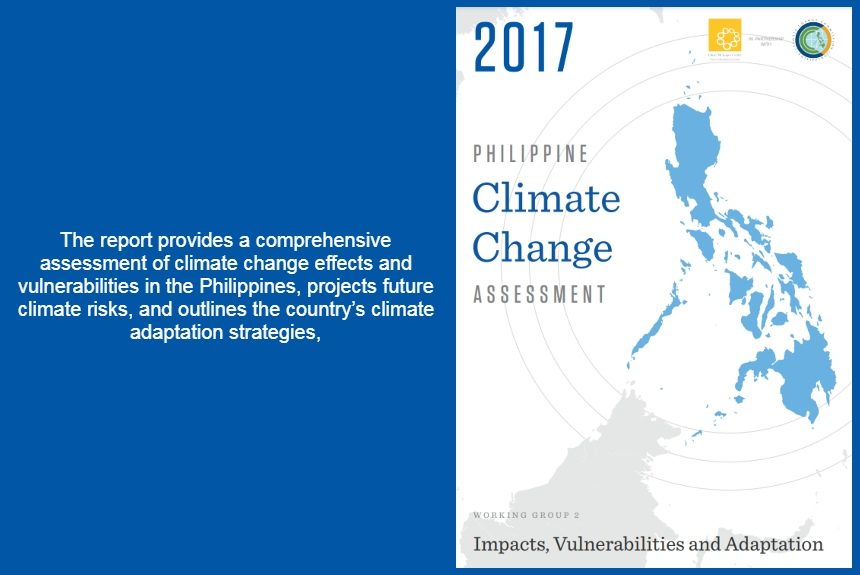The Philippines Climate Change Assessment Report 2017 provides a comprehensive look at the Climate change impacts and vulnerabilities in the Philippines, focusing on critical areas such as the country’s ecosystems, freshwater resources, coastal systems, low-lying areas, agriculture, and fisheries human health.
Current vulnerabilities in the Philippines
Apart from temperature increases, the variability of rainfall poses the most significant risk to the country. Heavy downpours were more common in the latter part of the 20th century than in the early part.
In Luzon, the largest and most populous island in the Philippines, heavy rainfalls were observed within the last decade compared to the previous ones. Still, other parts of the country, like Mindanao, Visayas, and Eastern Luzon, have experienced decreasing rainfall.
Typhoons in the Philippines usually bring significant floods, which can trigger landslides. The impacts of super typhoons can cause fatalities and destruction to livelihoods, houses, and infrastructure.
Climate change impacts in the Philippines, such as changes to the rainfall patterns, droughts, sea-level rise, health risk due to illness and diseases from flooding, and extreme temperatures, lead to annual losses in the country’s GDP. Climate change will also disproportionately affect the poor, women, indigenous people, and those whose livelihoods are dependent on agriculture and aquaculture.
El Niño and La Niña events influence the country’s climate variations. Extended dry periods during El Niño events raise the risk of grassland and forest fires.
The dry weather caused by El Niño is linked to the increase in tree poaching, as dryer conditions make trees easier to cut. The late onset of the rainy season reduces soil moisture, causing trees to stagnate or die.
Other climate change threats to natural ecosystems include coral loss due to rising temperatures and declining rice yields—the International Rice Research Institute estimates that every 1°C rise in temperature will result in a 10% yield loss.
Climate change will bring more intense droughts, higher sea-level rise, and water scarcity, which will most affect the agriculture sector. It will also lead to a decline in labor productivity and more public health emergencies due to the increased incidence of insect-borne, rodent-borne, food-borne, respiratory, and heat-related diseases.
Climate change will also increase the vulnerabilities of women, the poor, and the indigenous population.
Climate Adaption in the Philippines
The report mentions the National Framework Strategy on Climate Change (NFSCC) 2010-2022, which provides the framework and strategy for adaptation in the Philippines.
It also recommends mainstreaming climate change adaptation strategies in policies, plans, and national and local government programs as a strategic objective.
The report provides a comprehensive assessment of climate change effects and vulnerabilities in the Philippines, projects future climate risks, and, most importantly, outlines the country’s climate adaptation strategies or responses to reduce climate change impacts while at the same time looking for opportunities that may arise from climate change and through climate adaptation.
Critical areas discussed in the report are as follows:
- ecosystems,
- freshwater resources,
- coastal systems and low-lying areas,
- agriculture and fisheries, and
- human health.
The report provides an in-depth discussion of its climate change sensitivity and vulnerability, future trends, costs, and socio-economic impacts, current adaptation practices based on existing policies and regulations, constraints to existing and planned adaptation practices, and uncertainties of climate change impacts.
The information gaps that emerge are presented as opportunities for further research.
To view and read the entire report, CLICK the link below.
Source Citation:
Cruz, R. V. O., Aliño, P. M., Cabrera O. C., David, C. P. C., David, L. T., Lansigan, F. P., Lasco, R. D., Licuanan, W. R. Y., Lorenzo, F. M., Mamauag, S. S., Peñaflor, E. L., Perez, R. T., Pulhin, J. M., Rollon, R. N., Samson, M. S., Siringan, F. P., Tibig, L. V., Uy, N. M., Villanoy, C. L. (2017). 2017 Philippine Climate Change Assessment: Impacts, Vulnerabilities and Adaptation. The Oscar M. Lopez Center for Climate Change Adaptation and Disaster Risk Management Foundation, Inc. and Climate Change Commission



Leave a Reply